What happened to the list?
As the CCJ transitions to a
model better geared to leverage social networks, we are
moving away from our past use of email notification
services. If you would like to be added to our internal
email distribution, please send your request to
Rick@RARWRITER.com.
You can also follow us on
Facebook and
Twitter, which we will use to keep you notified of new
features and news articles.


ABOUT RAR: For those of
you new to this site, "RAR" is Rick Alan Rice, the publisher
of the RARWRITER Publishing Group websites.
Use this link to visit the
RAR music page, which features original music
compositions and other.
Use this link
to visit Rick Alan Rice's publications page, which
features excerpts from novels and other.
______________________________
Use the RARADIO link to go to
our radio page, where you will hear songs you are not likely
to hear elsewhere.
______________________________
MUSIC LINKS
"Music Hot Spots"
INTERNATIONAL LINKS
|
|

ATWOOD - "A Toiler's Weird Odyssey of Deliverance" -AVAILABLE
NOW FOR KINDLE (INCLUDING KINDLE COMPUTER APPS) FROM
AMAZON.COM. Use
this link.
CCJ Publisher Rick Alan Rice dissects
the building of America in a trilogy of novels
collectively called ATWOOD. Book One explores
the development of the American West through the
lens of public policy, land planning, municipal
development, and governance as it played out in one
of the new counties of Kansas in the latter half of
the 19th Century. The novel focuses on the religious
and cultural traditions that imbued the American
Midwest with a special character that continues to
have a profound effect on American politics to this
day. Book One creates an understanding about
America's cultural foundations that is further
explored in books two and three that further trace
the historical-cultural-spiritual development of one
isolated county on the Great Plains that stands as
an icon in the development of a certain brand of
American character. That's the serious stuff viewed
from high altitude. The story itself gets down and
dirty with the supernatural, which in ATWOOD
- A Toiler's Weird Odyssey of Deliverance is the
outfall of misfires in human interactions, from the
monumental to the sublime. The
book features the epic poem "The
Toiler" as
well as artwork by New Mexico artist Richard
Padilla.
Elmore Leonard
Meets Larry McMurtry
Western Crime
Novel
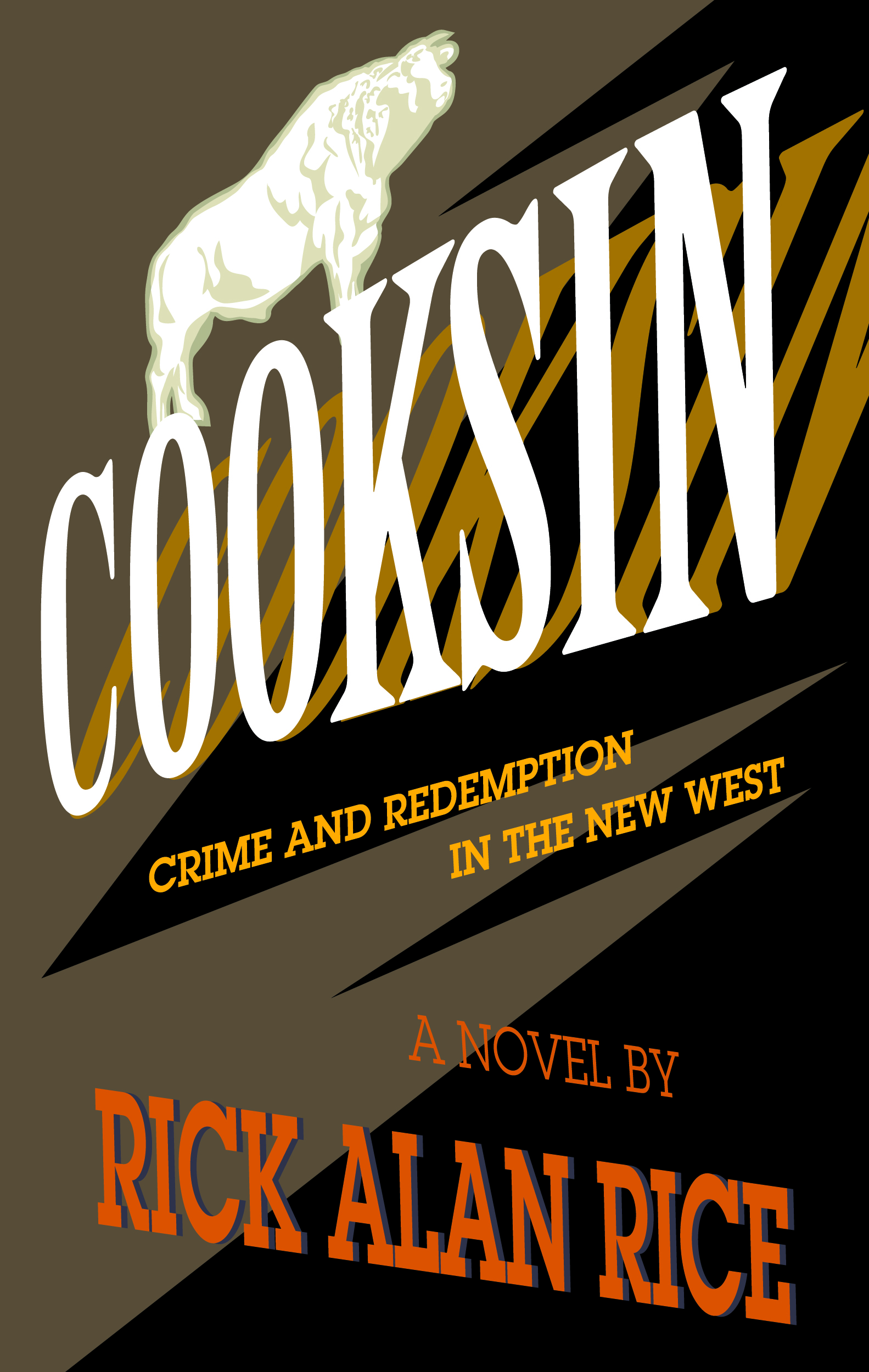
I am offering another
novel through Amazon's Kindle Direct Publishing service.
Cooksin is the story of a criminal syndicate that sets its
sights on a ranching/farming community in Weld County, Colorado,
1950. The perpetrators of the criminal enterprise steal farm
equipment, slaughter cattle, and rob the personal property of
individuals whose assets have been inventoried in advance and
distributed through a vast system of illegal commerce.
It is a ripping good yarn, filled
with suspense and intrigue. This was designed intentionally to
pay homage to the type of creative works being produced in 1950,
when the story is set. Richard Padilla
has done his usually brilliant work in capturing the look and feel of
a certain type of crime fiction being produced in that era. The
whole thing has the feel of those black & white films you see on
Turner Movie Classics, and the writing will remind you a little
of Elmore Leonard, whose earliest works were westerns.
Use this link.
EXPLORE THE KINDLE
BOOK LIBRARY
If you have not explored the books
available from Amazon.com's Kindle Publishing
division you would do yourself a favor to do so. You
will find classic literature there, as well as tons
of privately published books of every kind. A lot of
it is awful, like a lot of traditionally published
books are awful, but some are truly classics. You
can get the entire collection of Shakespeare's works
for two bucks.
You do not need to buy a Kindle to
take advantage of this low-cost library. Use
this link to go to an Amazon.com page from which you
can download for free a Kindle App for
your computer, tablet, or phone.
Amazon is the largest,
but far from the only digital publisher. You can
find similar treasure troves at
NOOK
Press (the
Barnes & Noble site), Lulu,
and others. |
|
|
|
|
|
|
MUSIC
by RAR
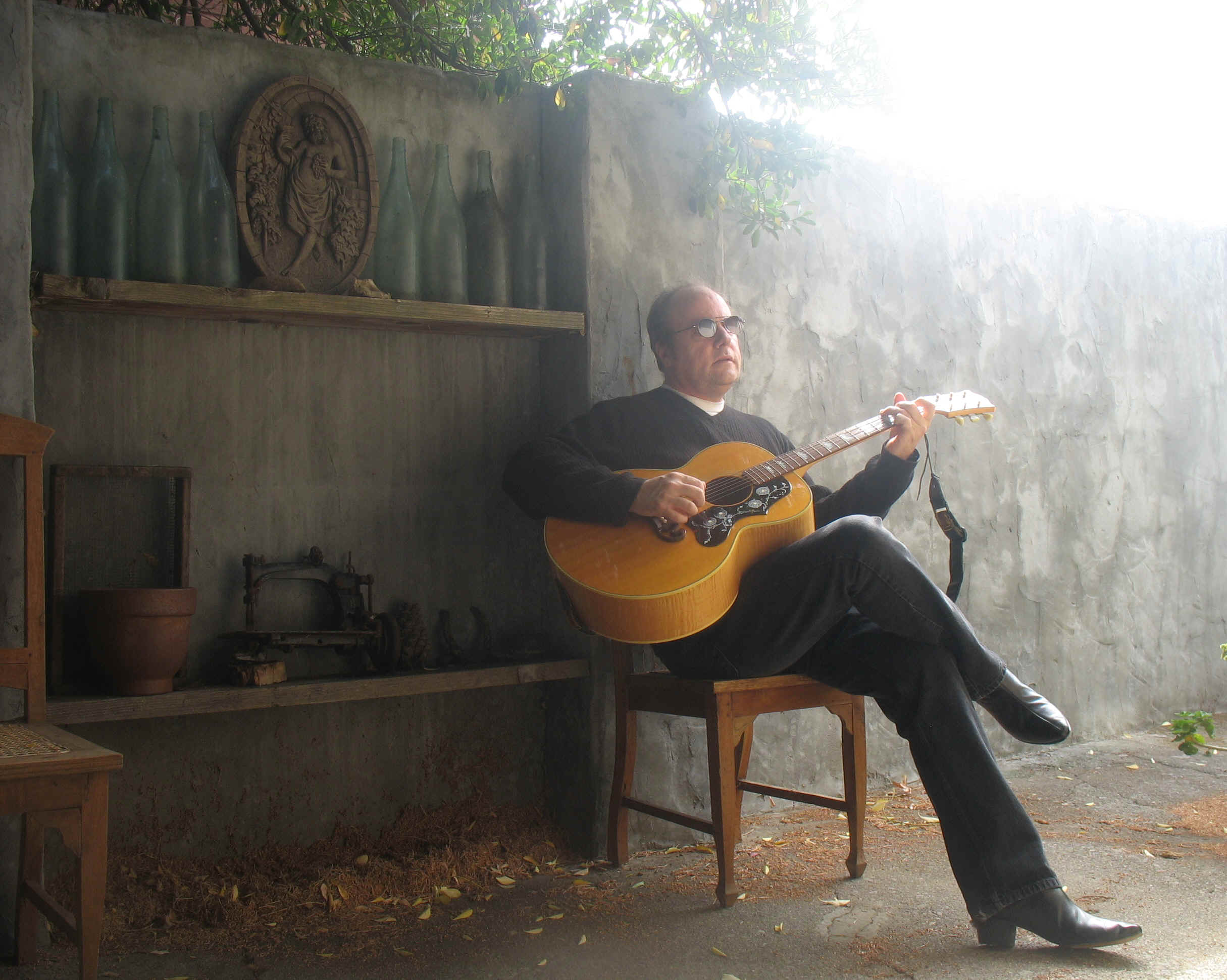
This is the
landing page and a starting place to browse through RAR tunes.
Biographical information is provided on this page, as are links to additional
pages where you will find original
compositions, mostly recorded in my PC-based home studio on Cakewalk's Sonar
Producer software. In addition to RAR originals, you will find information on
special projects, such as the CD presented below, as well as biographical
information.
_____________________________________________________
RAR Background
 Like many people my age, I started playing music in 1964
- about a week after first seeing The Beatles on the Ed Sullivan Show. Like many people my age, I started playing music in 1964
- about a week after first seeing The Beatles on the Ed Sullivan Show.
I was eleven years old. My dad rented an electric guitar from a downtown Denver music store as part of a package deal that included lessons. So, I spent one summer in a little practice room with a couple amplifiers and a country western lounge lizard learning the basics of pick and strum, before trading in the rental (and the lessons) for a guitar of my own. (For the record, the guitar my dad bought for me was a Les Paul Junior, 1959-60 vintage, the finest playing guitar I have ever been stupid enough to eventually part with.)
I started playing around the neighborhood with similarly inspired guys, a practice that would continue through high school and college and on into my adult life, and I started writing songs.
My parents were in their early 20s when I was born and the radio was on a lot in our house as I was growing up. I recall hearing Jimmy Rogers, The Everly Brothers, Ricky Nelson, Roger Miller and Skeeter Davis. There was a sparse but eclectic collection of LPs around the house, ranging from Sinatra, Johnny Mathis and The Platters to Marty Robbins and Burl Ives. The first LP I ever owned was "Meet the Beatles," the stateside analog to their "With the Beatles" U.K. debut album. (My grandparents gifted me with a 45 RPM of Jim Reeves' 1958 recording of "Billy Billy Bayou," which was probably my first adult record.) Denver radio went through the folk era playing The Kingston Trio, then Leslie Gore, Gene Pitney, Roy Orbison, and The Beach Boys crowded them out and The Beatles made them disappear altogether.
My backdoor neighbor Mike Miller started playing the drums around the time I started on the guitar and we very quickly established ourselves as "rock'n roll stars" in the neighborhood. The two of us would do shows in his back yard, and most especially in the back yard of a neighborhood girl named Jeannie Gregg. Her family happened to have a back yard that had the shape of a natural outdoor theatre, with seating on the grass hillside overlooking the stage area below. We would charge neighborhood kids a quarter, dime, nickel -- anything they had. And we would play Beatles songs or any simple thing we could manage. Then we would sign autographs. We were in the sixth grade at the time, still able to make believe and sweep our younger neighbors right along with us in our fantasy stardom.
My musical aspirations took a hit when my parents moved our family away from Denver and to a small Kansas farming community. I did my best to export it as best I could, though I hadn't exactly moved into a hot bed of rock culture. I did find some guys with guitars and drums, most notably my high school classmate David Domsch. We would get together on weekends, usually at his house, and practice. I remember playing Gloria by Van Morrison's band Them, and The Animals' version of House of the Rising Sun, Paint It Black by the Stones, You Really Got Me by the Kinks, and I'm a Man by The
Yardbirds. Sometimes
somebody's parents would be out of town overnight and we would play at
their spur of the moment house parties, sometimes with an older guy named
Skip McCain who played the drums. We weren't magic. In fact, a common
rejoinder from my local detractors, when I would opine on which popular
bands were good and which weren't. was -- "Well they're better than
the Rice-Domsch band!" You can imagine our prospects.
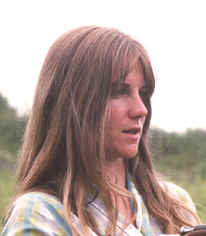 The
first rock concert I ever attended was Crosby, Stills, Nash & Young,
at the coliseum in Denver in 1970. They were awful, but they had an effect
on me. During my college years I was overtaken by an unfortunate fixation
with acoustic folk-rock. I had been quite a Dylan and Simon &
Garfunkle fan already -- in fact had lived in that Bookends album
after being parted from my first crush, the burgeoning artist Elizabeth
Kay (at left, see the links page.). The
first rock concert I ever attended was Crosby, Stills, Nash & Young,
at the coliseum in Denver in 1970. They were awful, but they had an effect
on me. During my college years I was overtaken by an unfortunate fixation
with acoustic folk-rock. I had been quite a Dylan and Simon &
Garfunkle fan already -- in fact had lived in that Bookends album
after being parted from my first crush, the burgeoning artist Elizabeth
Kay (at left, see the links page.).
By
the time I went off to college in the fall of 1970, The Beatles had broken
up, Hendrix and Joplin died in September and October of that year, and Jim
Morrison was within months of joining them and The Doors had waned anyway.
As far as I was concerned rock music was dead. I was no fan of Led
Zeppelin and the heavy metal that was starting to surface, and wasn't even
aware of the avant garde Velvet Underground and other such acts on the
east coast (who might have saved me). I had drifted into a neo-hippie
bliss, which was easy because Lawrence, Kansas in the early 1970s was a
very hippie-trippie place, even if the last vestiges of the "movement"
were a little suffused with wistfulness. There was still a lot of "love" and
"brotherhood" in the air. I fell in with a large group of hippie
musicians, and we would get high, listen to Joni Mitchell's Blue
album and think in sweetly poetic ways. Those were wonderful days. Cat
Stevens became a personal favorite, as did James Taylor. I was drifting
dangerously close to the mellow shoals. I was also drifting dangerously
close to people who had more talent than I did. There was one guy, in
particular, who had mastered a note-by-note cover of Jimi Hendrix' classic
Star
Spangled Banner solo, complete with descending bombs and explosions, and he had
this big Marshall amp, which I wasn't likely to get, and I got scared and
went acoustic.
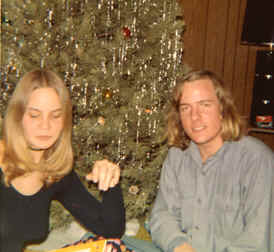 At
Richard's Music, in Lawrence, I
traded a 1959 or 1960 Gibson Les At
Richard's Music, in Lawrence, I
traded a 1959 or 1960 Gibson Les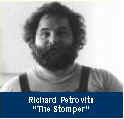 Paul Junior, plus cash, for a 1969
Martin
D12-20, to the gentleman pictured on the right -- Richard Petrovits, known
primarily as "The Stomper."
"Stomp,"
as we called him for short, owned this local guitar shop where all the
local players would get equipment. He
was a teddy bear of a guy who lavished attention on me whenever I would go
in there, usually with my girlfriend at the time, Valerie
Hale (pictured on the left), who was a
knockout along the lines of Tuesday Weld. Oh did Stomp love to see me. Paul Junior, plus cash, for a 1969
Martin
D12-20, to the gentleman pictured on the right -- Richard Petrovits, known
primarily as "The Stomper."
"Stomp,"
as we called him for short, owned this local guitar shop where all the
local players would get equipment. He
was a teddy bear of a guy who lavished attention on me whenever I would go
in there, usually with my girlfriend at the time, Valerie
Hale (pictured on the left), who was a
knockout along the lines of Tuesday Weld. Oh did Stomp love to see me. Anyway,
we "partnered" on what was surely one of the most
short-sighted (on my part) transactions ever known to man. You
cannot now get even a hammered 1959 or 1960 Gibson Les Paul Junior for
less than $3,700, but you can get a stinking D12-20 for...oh never mind.
Let me just say that I didn't even get the girl. I
didn't have a guitar other than that stupid 12-string for the remainder of
the 1970s, which seriously hampered my development as a guitarist. It was
rekindled in the 1980s when I purchased a Gibson ES-335, with a neck that
recalled (but was not as good as) that of my beloved LP Junior. During the
1970s I played in public rarely and almost always as a solo or in acoustic
duos. Music, like everything else about the '70s, was holding little
appeal for me. I was veering more toward being a writer and was working on
publications anyway. I recognized that
there was a crossover between my musical and literary ambitions -- I had
always been more of a songwriter than a musician -- but the life style of a solitary writer suited my
introverted nature more than being a musician. Musicians are often
extroverted, and I tended to go unnoticed in that company. While there is
a part of me who enjoys showing off in front of people, I am not a natural
performer. I'm not even a big fan of live music, more of a "record
man." Being a
record man has kept me a part of the music community, and my enthusiasm
for songwriting and for playing instruments, especially the guitar, have
kept me in to music. It is a huge part of my life. Some guys fish,
some golf, some garden, and I write and record music. I am, by
temperament, a producer.
*
* * * *
In
my music I strive to build songs around melody, though some of my most effective
are "dumber" than that. I strive to avoid cliché musically and
lyrically, even knowing that cliché is really at the heart of making things
"radio friendly." I endeavor to paint a sonic landscape, to the
extent that my technical skills allow. I attempt to create a mood, to
tell a story, usually with humor, and I can't help but be ironic.
A NOTE ON THE BEATLES
To me The Beatles remain in a class of their own.
Everything about them was just cool, from their wide musical range to the
graphic design of their logo to their dark early look.
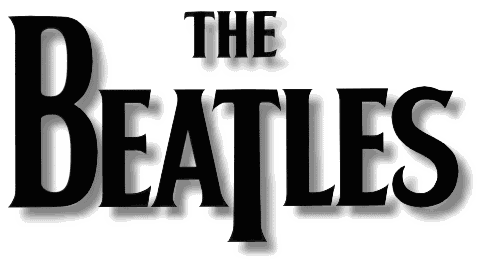 They seemed so comfortable within themselves that it elevated their music. Critically, I believe they have suffered a bit with the Fred
Astaire syndrome,
which is to say that they made it look too easy. By the time we in the states saw them they had been playing together professionally for
years, and doing it in hard places. I always thought it ironic that between The
Beatles, who sort of played the clean cut rockers, and the Rolling Stones, who
portrayed the bad boy image,
it was The Beatles who were the true working class heroes. (I don't think, for
instance, that either Mick Jagger or Keith Richards would have fared well in a
street fight with John Lennon.) They seemed so comfortable within themselves that it elevated their music. Critically, I believe they have suffered a bit with the Fred
Astaire syndrome,
which is to say that they made it look too easy. By the time we in the states saw them they had been playing together professionally for
years, and doing it in hard places. I always thought it ironic that between The
Beatles, who sort of played the clean cut rockers, and the Rolling Stones, who
portrayed the bad boy image,
it was The Beatles who were the true working class heroes. (I don't think, for
instance, that either Mick Jagger or Keith Richards would have fared well in a
street fight with John Lennon.)
For those who doubted the individual Beatles'
musical virtuosity, Paul McCartney probably didn't do the band any favors by mounting the Let It Be movie, which has scenes of them struggling through the process of birthing new material.
As a musician, I found it inspirational, but detractors could get stuck on the
parts where they struggle. It is in McCartney's amazing hubris to expose the innards of his music machine.
As
songwriters, I think both Lennon and McCartney paid tribute to legacy and
tradition, which I think was key to their charm. Lennon was musically responsive
to R&B and rock'n roll, but equally powerful were his connections to Lewis
Carroll and Salvadore Dali. So, you got songs like Lucy In the Sky, To the
Benefit of Mr. Kite and I Am the Walrus along with Revolution and Happiness Is A
Warm Gun. McCartney always seemed in homage to
musical theatre and to the tradition of the variety show. So, you got songs like
Good Day Sunshine and When I'm Sixty-Four along with I'm Down and Oh Darling. George Harrison, on the other hand,
wrote like a guitar student, driven by romantic progressions and, in every song,
some signature voicing of a principle chord. Pick any Harrison song. The
resulting Beatles' songbook is so rich it is staggering. There are other great oeuvres,
but to me none match The Beatles' in range and general likeability.
YOU
ARE ON THE RAR MUSIC
PAGE
|
The RAR Music
pages are divided over several sections:
Music by RAR Originals
Music by RAR Favorites
Music by RAR Covers
|
Equipment
used in these recordings:
|
|
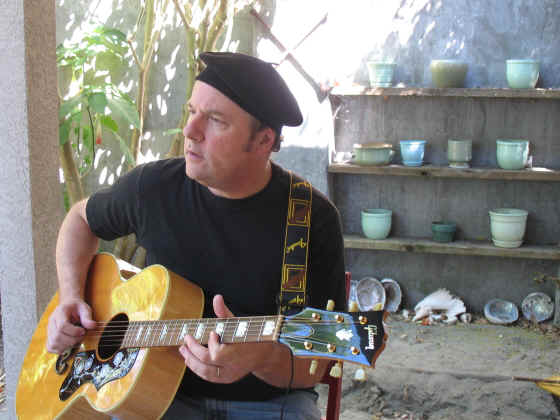
|
Gibson
ES-335
|
1967
Fender Deluxe Reverb Amplifier
|
|
Fender
"Jeff Beck" Stratocaster
|
Cakewalk
- Sonar Producer Digital Recording Software and Plug-Ins
|
|
Rickenbacker
330-12
|
Yamaha
MG16/6FX Mixer
|
|
Gibson
J-150 Jumbo
|
Digitech
RP200 Effects
|
|
Martin
D12-20
|
TubePac
Pre-Amp/ Compressor
|
|
Epiphone
Broadway
|
Tascam
US-122 Interface
|
|
Epiphone
Viola Bass
|
Behringer
B-1 Condenser Mic
|
|
|
Nylon String Guitar
|
|
|
